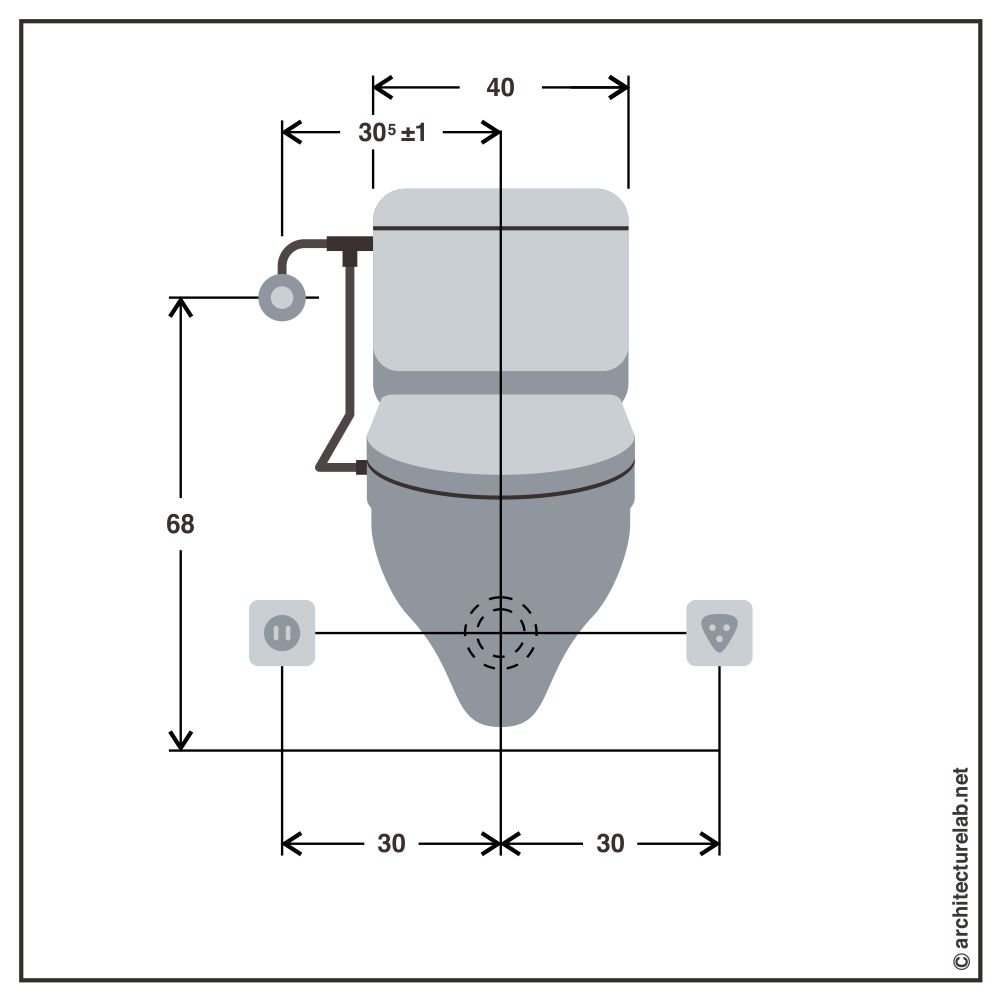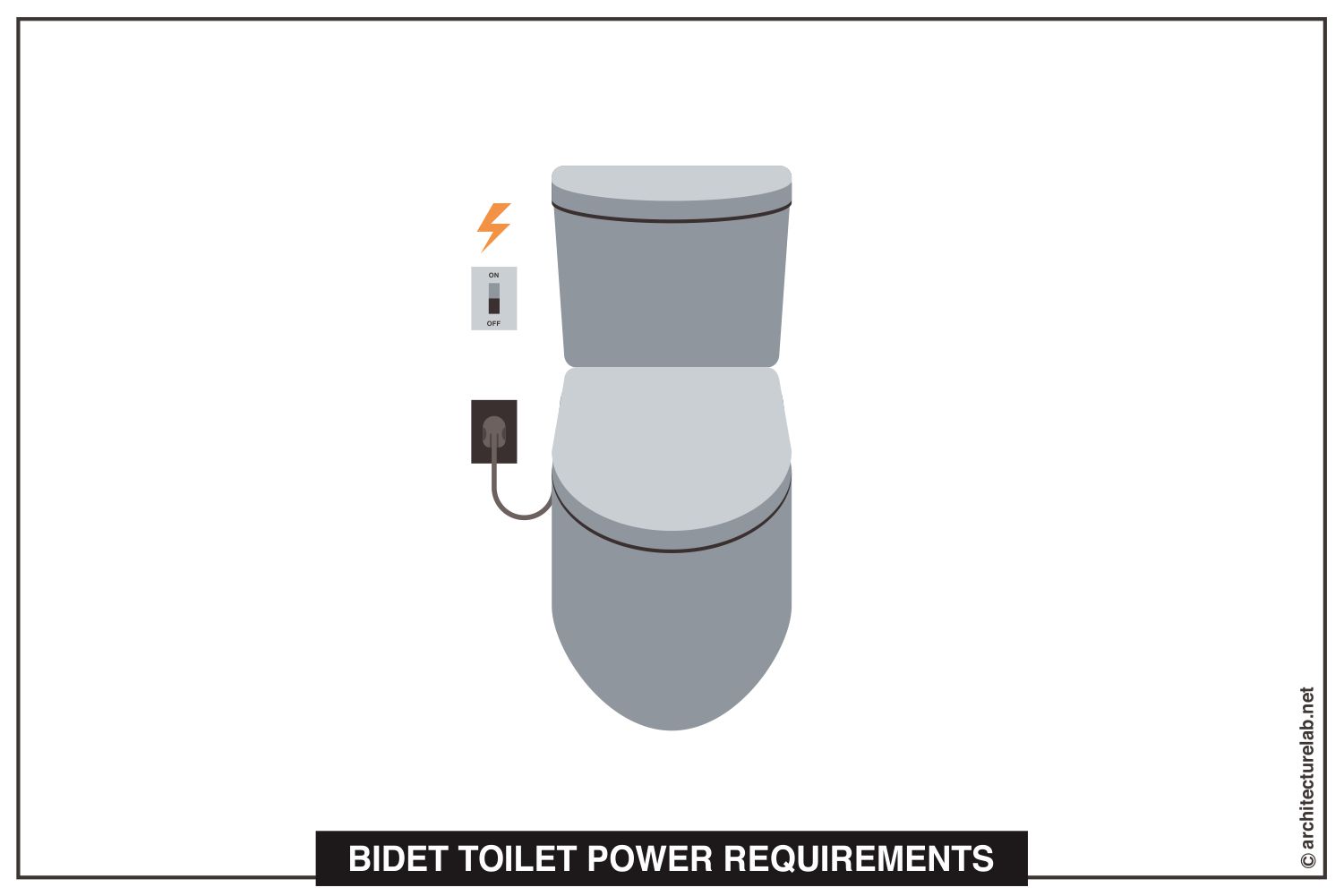Bidet toilet seats, invented in the 1600s in France, have gained popularity across the globe for their hygiene benefits and comfort features.
However, before installing a bidet seat in your bathroom, it’s important to understand how much power will be required and various other specifications. For instance, an electric bidet toilet seat requires at least 500 to 600 watts of power. But like most electronic products, this specification may vary from one bidet seat to the other.
Hence, in this article, we will provide you with a comprehensive understanding of the electrical specifications and considerations necessary for bidet toilet seat installation and operation.
Why You Should Consider Installing A Bidet Seat In Your Bathroom
Various countries like Japan, Europe, and the United States are switching to bidet toilet seats due to their ability to promote personal hygiene. By using an adjustable stream of water, bidet seats offer better cleanliness and freshness.
Besides, using a bidet seat will reduce the requirement for toilet paper, thereby protecting the environment. Not to forget, the reduced need to purchase toilet paper means you will be saving more money in the long run.

Why Do Bidet Toilet Seats Require Power?
A bidet seat boasts numerous features and bidet attachments that require electricity, like a heated seat, remote control, sprayer/electric nozzle, adjustable water pressure, tankless water heater, etc. To enable these functionalities, electricity is necessary, and power consumption increases with the number of features used.
Even non-electric bidet seats may require electricity, particularly if you desire features like warm water. In such cases, a separate water heating tank must be installed. But it’s also important to note that these features are optional for non-electric bidets. So, power considerations are not mandatory as they are for electrical bidets.
What Factors Determine The Electrical Requirements Of Bidet Seats
1. Type Of Bidet Toilet Seat
The electric power requirements of a bidet seat are significantly influenced by its type. That said, there are three different types of electrical bidet toilet seats available on the market – entry-level, mid-range, and high-end.
Entry-level electrical bidet toilet seats are easy on the budget and typically have the lowest power rating. Mid-range bidet seats fall into an intermediate price range and boast a relatively higher power rating. Lastly, high-end bidets are the most expensive units, offering a significantly higher power rating.
2. Frequency Of Use
The power requirements of a bidet toilet seat will escalate with frequent usage. This can pose a challenge in households with larger families. Conversely, for smaller families, the power requirements will be relatively lower.
3. Available Features
The greater the number of features integrated into the bidet seat, the higher its power consumption will be.
4. Feature Settings
The power consumption of an electronic bidet will largely vary with the specific settings in which its features are utilized. For instance, if you opt for hot water over lukewarm water, you will need to adjust the heater to a higher temperature setting. As a result, your bidet toilet seat will require more power to heat the water.
5. Number Of Features Being Used
Needless to say, if you use only a single function of your bidet toilet seat, its power consumption will be significantly lower compared to using more features simultaneously. However, you must remember that even if none of the features are used, the basic electrical outlet of your system will still require electricity to operate.
Nonetheless, due to their minimal power draw, the overall power consumption remains negligible.
How Much Electricity Does A Bidet Toilet Seat Use?
To understand the power requirements of an electrical bidet toilet seat, it is necessary to know the various units employed for measuring power. This will enhance your knowledge of bidet power requirements and their corresponding measurements.
1. Wattage
Watt (W) is the most common power unit, and it represents the amount of electricity consumed by a device when it is in operation. Typically, wattage is measured by running the device at its maximum power level for a specific duration.
You can find information about the wattage of an electronic bidet in its user manual. However, the actual operating wattage of modern bidets is usually lower than the maximum wattage stated in the manuals. In fact, bidet toilets utilize the maximum wattage for merely 4-5 minutes per day. In idle mode or when eco mode is on, your bidet will operate with a very low power draw.
2. Kilowatt-Hours
Kilowatt-hours (kWh) is an alternative unit used to measure energy consumption, specifically the total electrical energy consumed by a device in an hour. Unlike wattage, which indicates the maximum power capacity of a device, kilowatt-hours provide insight into the actual energy usage of the device. So, this unit is utilized in energy bills to calculate the overall energy consumption of a household.
The energy consumed by bidet toilets can vary based on several factors discussed above. Consequently, bidet user manuals typically do not mention the kilowatt-hour rating.
Tip
To determine the actual energy consumption of your bidet seat, we recommend referring to your monthly energy bills.
Power Consumption Of Different Types Of Bidet Seats
| Types Of Bidet Seats | Wattage (Approximate Value) | Daily Power Consumption | Monthly Electricity Consumption |
|---|---|---|---|
| Entry-Level Bidet Toilet Seats | 300-600 watts | 0.3 – 0.6 kWh | 9 – 18 kWh |
| Mid-Range Electric Bidet Toilet Seats | 600-1000 watts | 0.6 – 1.2 kWh | 18 – 36 kWh |
| High-End Luxury Bidet Toilet Seats | 1000-1600 watts | 1.2 – 1.6 kWh | 36 – 48 kWh |
Things To Keep In Mind Before Purchasing A Bidet Seat
1. Toilet Compatibility
If the shape of your toilet bowl is elongated, you can easily find a compatible bidet seat or bidet attachment. However, if your toilet is round, you may be left with limited options. So, it is essential to measure the toilet seat carefully before making a purchase to ensure a proper fit.
Or, you may consider opting for a toilet that already includes a bidet seat, as this guarantees compatibility without the need for additional measurements.
2. Bidet Seat Electrical Requirements
Bidet toilet seats require a standard 110-120V, 15 Ampere, 3-prong electrical outlet, which is commonly found in most households. However, plumbing codes typically mandate the use of a GFCI (ground-fault circuit interrupter) outlet or an RCD (residual-current device) in water-borne environments, like bathrooms.
A GFCI outlet contains a built-in circuit breaker, offering protection against shocks in case water enters the electrical outlet. If you don’t have such electrical outlets near your toilet seat, it is best to hire an electrician to install one for you. This is because the installation will require a long process of turning off the water supply and fixing electrical wires.
Also, check your national electrical code and regional electrical code for specific instructions regarding the installation and operation of such electric fixtures.
Do you require dedicated circuits for electric bidet seats?
An electronic bidet does not necessitate a dedicated circuit unless there are other high-power appliances being used simultaneously on the same circuit. Note that in older homes adhering to dated electrical standards, adding a bidet toilet seat on a shared circuit with bathroom lighting may cause an electrical fault and the lights to flicker.
Where should you install an electrical outlet for your bidet?
Typically, electric bidet toilet seats come with 4-foot-long electrical cords, so we recommend installing new outlets on the wall behind the toilet. However, this feature may differ for bidets from different brands. As such, we recommend getting an extension cord to negate the possibility of the electrical outlet being too far from the bidet.
How many AMPs are required to run bidet seats?
Most bidets have a maximum power draw of approximately 13 amps during peak usage.
Final Words
While bidet toilets are gaining widespread popularity, many homeowners fail to understand their power requirements, thereby not being able to utilize them to their full potential.
Electric bidet seats come with various features that require electricity, and the power draw increases with the number of features used. It is also important to consider the type of bidet and its corresponding max draw settings.
By learning about the power requirements of the bidet toilet seat, one can enjoy its benefits while ensuring energy efficiency.



